#rich tapestry of art and culture
Text
also something i really like doing is if there's a song i really like ill look up the samples used and listen to those original songs or otherwise try to find influences cited by the artist which i think is an excellent way to broaden your horizons & also deepen your understanding of the original song. idk i just find music way more enjoyable when i know the stuff that went into it
#thinking about how rufige kru sampled japan's ghosts.#or the way I Got Five On It was interpolated from why you treat me so bad & then recontextualized AGAIN by jordan peele in Us#rich tapestry of art and culture#ALSO TRICKY SAMPLED GHOSTS TOO IN MAXINQUAYE#not sampled but quoted** rather
7 notes
·
View notes
Note
Create another valyrian household that escaped Valyria. They hid themselves away by magic on an island not visible to anyone, they don't wish to be seen. On an island with a huge fortress accompanied with another smaller fortress which is basically a library. They are similar to Targaryens, but much more knowledgeable on everything (thanks to Valyria). They ride dragons, purple shades of eyes, silver-gold hair. Only two differences being, they have never been married outside of family(yuck) with no Westerosi blood therefore very different customs, fully valyrian customs and traditions rather than Westerosi+valyrian(Targs, Vels). Hope you have fun, thank you:)

𓈒ㅤׂㅤ 𓇼 ࣪ 𝐇𝐎𝐔𝐒𝐄 𝐋𝐘𝐑𝐈𝐄𝐋𝐋𝐄 𓈒ㅤׂㅤ⭒⠀
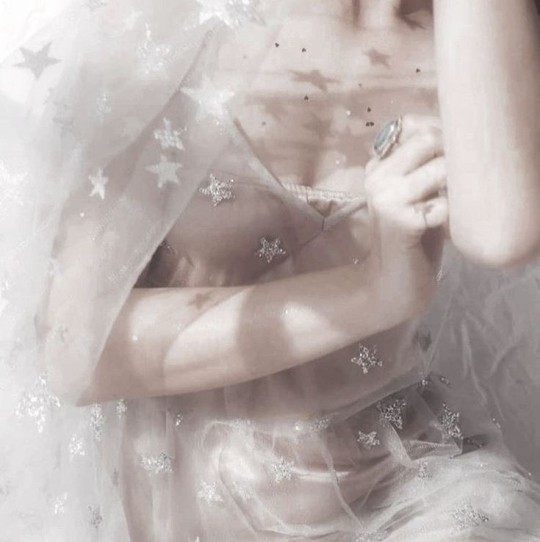
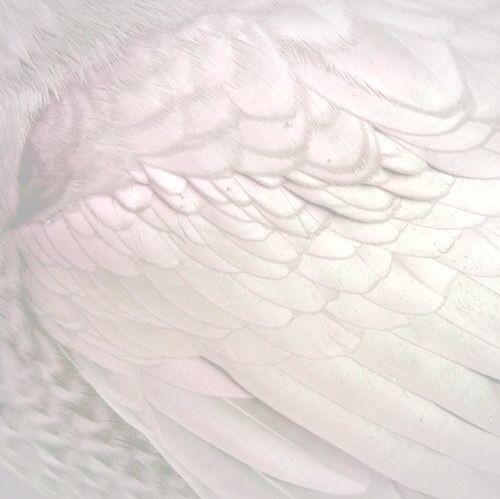

꒰͡ ⠀ ִ 𝐺𝐸𝑁𝑇𝐿𝐸 𝐴𝑁𝐷 𝐿𝑂𝑉𝐼𝑁𝐺 ⠀ׂ ⠀ ͡꒱
─ 𝘈 𝘤𝘳𝘦𝘢𝘵𝘶𝘳𝘦 𝘰𝘧 𝘮𝘢𝘨𝘪𝘤, 𝘨𝘳𝘢𝘤𝘦, 𝘢𝘯𝘥 𝘭𝘪𝘨𝘩𝘵 𖤐
─ 𝘈 𝘣𝘦𝘪𝘯𝘨 𝘰𝘧 𝘱𝘶𝘳𝘪𝘵𝘺, 𝘢 𝘸𝘰𝘯𝘥𝘳𝘰𝘶𝘴 𝘴𝘪𝘨𝘩𝘵 𖤐

In the rich tapestry of Valyrian history, woven with the threads of power, magic, and dragonfire, the House Lyrielle stands as a testament to the enduring grace and wisdom of Old Valyria. Their story is a whisper on the wind, a secret melody sung by the waves that surround their hidden island sanctuary. Known to but a few, the Lyrielles are the guardians of a legacy untainted by the ambition and corruption that led to the Doom.
The sigil of House Lyrielle is as enigmatic as the house itself—an angelic dragon, graceful and serene, enwreathed in a ring of white roses against a backdrop of deepest emerald. The dragon, smaller in stature but fierce in its intelligence and agility, represents the nature of the Lyrielles' own dragons. The emerald ground symbolizes their secluded island, a jewel hidden in the vast sea, and the white roses signify the purity of their intentions and the mystical barriers that veil their home from the unwary eye.
Their words, "Beyond Sight, Within Light," speak to the heart of the House Lyrielle ethos. They live beyond the sight of the known world, in a realm of their own making, where knowledge and virtue shine brighter than any Valyrian steel. These words are a promise of their commitment to the greater good, a reminder of their hidden presence guiding the fate of the world from the shadows.
The Lyrielles, in their seclusion, have preserved the purity of their Valyrian bloodline, untouched by Westerosi influence. Their customs and traditions remain a living tapestry of Old Valyria's glory, a culture preserved in amber amidst the tumultuous seas of change.
Education and learning are held in the highest regard. The smaller fortress, known as the Lyceum of Light, houses a vast collection of scrolls and tomes, not only on magic and dragonlore but on the sciences, arts, and philosophies of the wider world. Even though the Lyrielles seclude themselves from the outside, they possess an insatiable thirst for knowledge that keeps their minds as sharp as their swords.
The Lyrielles are ethereal in their beauty, with eyes that hold the mysteries of the universe—shades of purple that shift with the light. Their silver-gold hair flows like liquid moonlight, a hallmark of their Valyrian bloodline. They are skilled in the art of healing, their touch capable of mending wounds that would confound even the most learned maesters. Their bond with their dragons is profound, rooted in a deep understanding and respect for these majestic creatures.
Their dragons, lithe and swift, mirror their masters in both appearance and temperament. With scales that catch the moon's light, casting reflections in hues of amethyst and sapphire, they are specters of the night sky, their presence felt rather than seen, their agility unmatched by any creature, mythical or otherwise.
To the Lyrielles, the world outside is a place of beauty marred by the scars of greed and violence. They see themselves as custodians of what remains pure and true. Their philosophy is one of balance and harmony, seeking to preserve the natural world and its wonders. They are benevolent, yet their kindness is not a weakness but a strength, fortified by their unwavering sense of justice and fairness.
The Lyrielles embody a paradox. They are both guardians and isolationists, wielding their power to protect the natural world and its untold secrets while shunning the very societies they seek to preserve from afar. Their personalities are marked by a gentle demeanor, an innate grace that belies the strength and wisdom that centuries of unbroken tradition have instilled in them. They are the custodians of healing, their knowledge of the arcane arts allowing them to mend wounds and cure maladies thought beyond the reach of mortal hands.
Yet, for all their power and knowledge, the Lyrielles possess a naivety born of their seclusion. They view the outside world through the lens of caution and fear, tales of its dangers passed down through generations. This isolation has fostered a deep sense of kinship and loyalty among them, their bonds unbreakable, their trust in one another absolute.
In a realm where the quest for power often leads to ruin, House Lyrielle remains a beacon of hope. They are the whisper in the heart of the storm, the unseen hand that guides towards light. Their existence is a testament to the belief that even in the darkest of times, there are those who shine brightly, not for glory or fame, but for the love of all that is good and true in the world.

My other original house:
House Celestyr
House Valysar
@fragileheartbeats . Don't plagiarise, repost, or translate any of my works on here or any other websites.
@emily2003alzaga @nash-dara @altaircc @heavenly1927 @omgsuperstarg @asoiafhyperfixation
#house lyrielle#house of the dragon#house targaryen#house of dragons#house of dragon oc#house of the dragon x reader#hotd fanfic#hotd oc#hotd x reader#a song of ice and fire#song of ice and fire#game of thrones x reader#game of thrones oc#game of thrones#aemond fanfiction#aemond one eye#aemond targaryen#aemond x reader#daemon targeryan#daemon targaryen x reader#writing#fantasy#novel#story#daemon x reader#aegon ii targaryen x reader#aegon x reader#aegon ii targaryen#aegon ii x reader#asoiaf
387 notes
·
View notes
Text
i'm thinking about how the characterisation of the black family tends to be really difficult to get right and one of the reasons that i can think of is that we don't know enough of wizarding culture, so we try to convey the atmosphere and the dynamics through codes that are familiar to us
that's why they are so victorian in so many fics. they act and speak like they're inside a victorian novel, they only ever wear black and dark green, the high society/pure blood circle is also composed by meeting for tea, and having balls, and discussing politics, and arranged marriages
and that's not bad!!! i read and love some fics like that, but i think this is an aesthetic that completely ignores some of the things we know about wizards and about the blacks
first of all, the clothes. wizards wear robes. not late 19th century clothes, robes. and they're most often dramatic and colorful. this is something easily observed in the very first chapter of PS. so i think the blacks should wear deep purple and emerald green and silver and burgundy and turquoise, make outfits fun!!!
second, grimmauld place tells us some things about its inhabitants. the fact that it's a muggle house in a muggle neighborhood shows that they must have some level of cognitive dissonance in terms of what elements of muggle culture and lifestyle they hold (but i don't think that applies to holding the same patterns of views and behaviors of high society, again, it's about how the writers tries to convey "rich and uptight" with codes that are familiar to them). the decoration choices for the house are also very telling, family heirlooms, big clocks, tapestry... troll leg and house elf heads??? that's morbid. that's camp.
and my point is, black family characterisation lacks on campiness. wizards are inherently weird. anything in which they're overly polite and too aristocratic is inaccurate. they are bigots and lobbyists and one of them was literally headmaster of hogwarts. they are into the dark arts but they don't torture their children. make them funnier and messier and weirder and more like real people instead of a bunch of lines from downton abbey glued together
#the noble and most ancient house of black#sirius black#regulus black#walburga black#orion black#alphard black#cygnus black#bellatrix black#andromeda black#narcissa black#lucretia black#hp meta
416 notes
·
View notes
Note
a story about (y/n) who is khal drogo's translator and khal drogo slowly falls in love with her and asks her to be his khaleesi in front of all his people one night by the fire
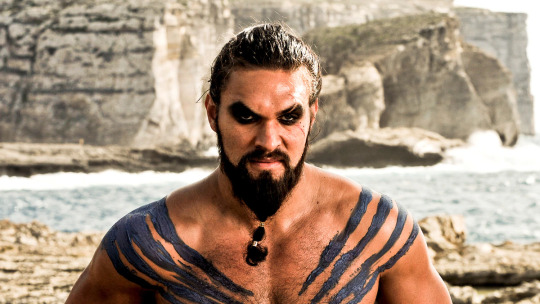
The Khaleesi's Heart
(Y/N) had always been captivated by the vastness of the Dothraki Sea, with its endless golden plains stretching as far as the eye could see. She had joined the Khalasar as a translator, seeking adventure and a chance to immerse herself in the rich culture of the fierce horse lords. Little did she know that her journey would lead to an unexpected and life-changing encounter.
Khal Drogo, a man of immense stature and a reputation that preceded him, had never taken much interest in the affairs of outsiders. His heart was bound to the warrior code, and his focus was on conquest and the endless expansion of his Khalasar. As he led his people through the sea of grass, he rarely spared a second thought for anything or anyone beyond his warriors and his beloved bloodriders.
One fateful evening, as the setting sun bathed the horizon in hues of fiery red and orange, Khal Drogo's warriors captured a party of travelers on the fringes of his territory. Among them was (Y/N), who had been accompanying a merchant caravan on her journey to learn the Dothraki ways. She found herself standing before the imposing Khal, her heart pounding in her chest.
(Y/N) knew the importance of diplomacy and the art of communication. Fluent in both the Dothraki tongue and the common language of Westeros, she was able to bridge the gap between her people and the fierce Khalasar. Her eyes met Drogo's, and she bowed respectfully, uttering the words of introduction in flawless Dothraki.
"Anhaan vekhat hoshori, majin adak jin," she spoke, introducing herself as a translator.
Khal Drogo, unaccustomed to hearing his mother tongue from the lips of a foreigner, was taken aback. His dark eyes bore into hers as if trying to decipher her intentions. Her confidence, intelligence, and the fire in her eyes intrigued him in a way that no one ever had.
Over time, as (Y/N) continued to serve as translator, she and Khal Drogo shared more than just words. She found herself drawn to the strength and honor that defined his character. He, in turn, began to seek her presence during meetings and discussions, valuing her insights and wisdom.
As the weeks turned into months, a connection grew between them, though they rarely spoke of it aloud. (Y/N) saw beyond the fearsome exterior of Khal Drogo, recognizing the depth of his heart and the unspoken longing in his gaze. Khal Drogo, a man of few words, found himself yearning for (Y/N)'s companionship, her laughter, and the way her eyes sparkled when she shared tales of her homeland.
The Khalasar continued its relentless journey across the Dothraki Sea, conquering rival clans and collecting tribute. In the midst of the dust and chaos of battle, Khal Drogo and (Y/N) found solace in each other's presence. They shared stolen moments by the campfire, where he would listen to her recount stories of the world beyond the grasslands, and she would learn of the proud history of the Dothraki.
One night, as they sat by the fire, the sky above them was ablaze with a tapestry of stars. Khal Drogo turned to (Y/N), his eyes filled with an intensity she had come to know all too well.
"Anhaan vekhat anni, (Y/N)," he said, his voice low and filled with sincerity. "You have brought light to my Khalasar and to my heart. You are strong, wise, and beautiful. Will you be my Khaleesi?"
(Y/N)'s heart skipped a beat. She had never anticipated such a proposition. To be the Khaleesi of the Great Khal Drogo meant leaving behind her old life, her dreams of adventure, and embracing a destiny she had never imagined. Yet, as she looked into the eyes of the man who had come to mean so much to her, she knew that her heart had already made its choice.
"Yes, Khal Drogo," she replied, her voice unwavering. "I will be your Khaleesi."
Word of Khal Drogo's declaration spread throughout the Khalasar like wildfire. The warriors and the women ululated in celebration, recognizing that their Khal had chosen a powerful and deserving Khaleesi. The union of two strong souls promised a future of prosperity and unity.
As the flames of the fire danced around them that night, Khal Drogo and (Y/N) sealed their commitment with a sacred Dothraki ritual. Their love would be tested in the trials of the unforgiving Dothraki culture, but they were determined to stand together, a force to be reckoned with.
And so, under the vast, starlit expanse of the Dothraki Sea, a new chapter in their lives began. Khal Drogo, once a warrior without equal, had found something even more precious than conquest – love. And (Y/N), the outsider who had ventured into this world seeking adventure, had found a love that would change her destiny forever.
As the months turned into years, Khal Drogo and his Khaleesi led the Great Khalasar to new heights, forging alliances and achieving greatness that had not been seen in generations. Their love story, whispered through the winds of the Dothraki Sea, became a legend, a testament to the power of love to transcend boundaries and unite even the fiercest of hearts.
In the heart of the Dothraki Sea, beneath the endless sky, Khal Drogo and (Y/N) embarked on a journey of love and destiny, a journey that would shape the future of the Dothraki and etch their names into the annals of history as a love that conquered all.
NOTE! This story was generated by OpenAI
#drogo x you#drogo#khal drogo x y/n#drogo x y/n#khal drogo x you#khal drogo#khal drogo x reader#drogo x reader#GameOfThrones#Khaleesi#Dothraki#LoveStory#FantasyRomance#Adventure#EpicTales#Fiction#StrongCharacters#Storytelling#RomanticFantasy#LoveConquersAll#FictionalWorlds#CharacterDevelopment#TaleOfLove
328 notes
·
View notes
Text

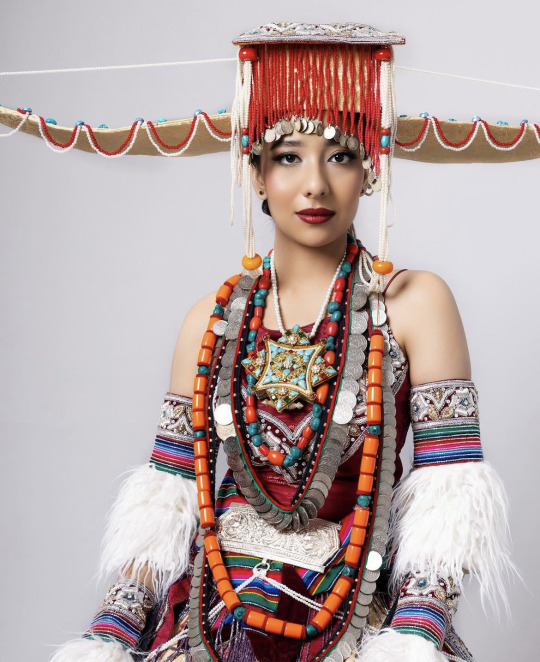

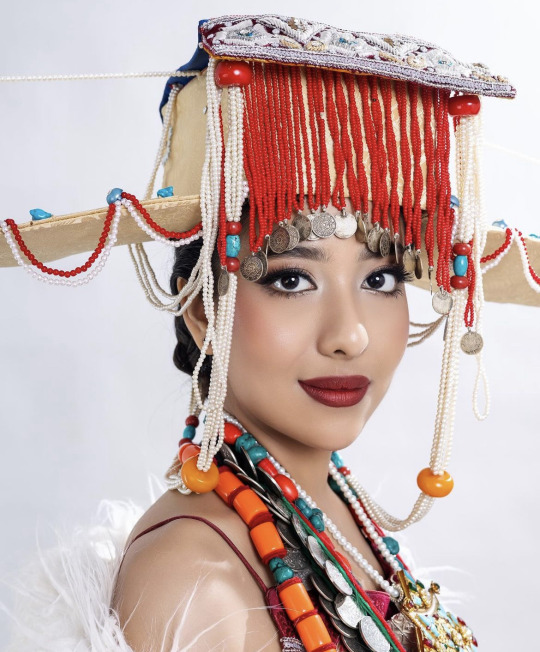
Miss International Nepal 2023 National Costume
In the heart of the Himalayas, where rugged terrains and challenging lifestyles have long defined existence, a tribute emerges, a celebration of the unyielding spirit of the women who call this land home. The gown, adorned with intricate silver and jewel embroidery, shimmers like the Himalayan moonlight, a testament to the resilience of generations who've navigated these unforgiving landscapes. This homage to Nepal unites us as one, a tapestry of diverse cultures, each thread woven with love. We stand as a powerful statement, a testament to women who've conquered both the peaks of the Himalayas and the peaks of their dreams. Empowered with steadfast might, our beauty shines not just in attire but in spirit. On the global stage, this costume sends a powerful message of empowerment and strength despite challenging terrains and limited support systems. It showcases the harmonious fusion of tradition, uniquely represented in every pattern. The national bird, a symbol of freedom, takes flight. The lotus, a symbol of purity, blooms in vibrant colors. The rich art of Thangka drapes like a canvas of our heritage. Fur, amidst this ensemble, lends warmth, a reminder of the rugged terrains we've traversed. This costume stands as a remarkable fusion of tradition and modernity, leaving an indelible mark on the Miss International 2023 Beauty Pageant, celebrating the extraordinary spirit of Himalayan women.
258 notes
·
View notes
Text




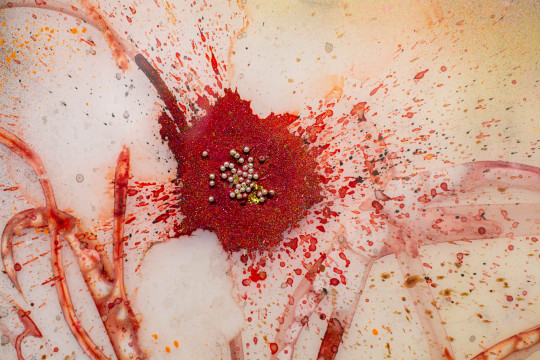
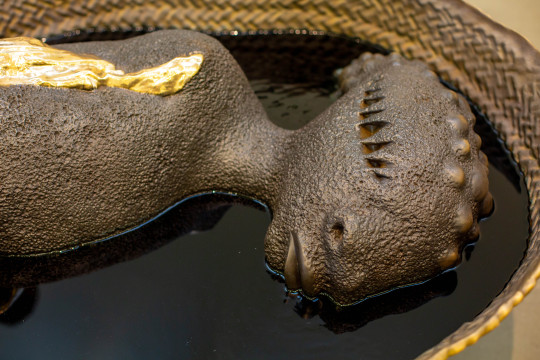



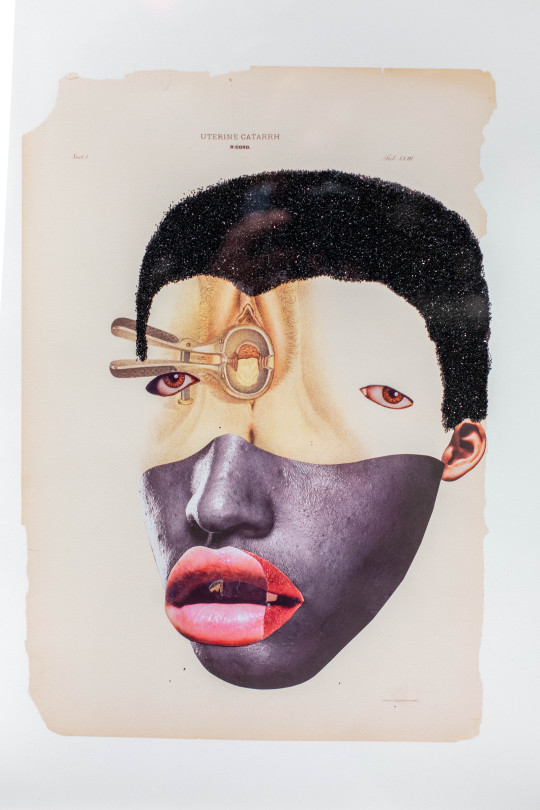



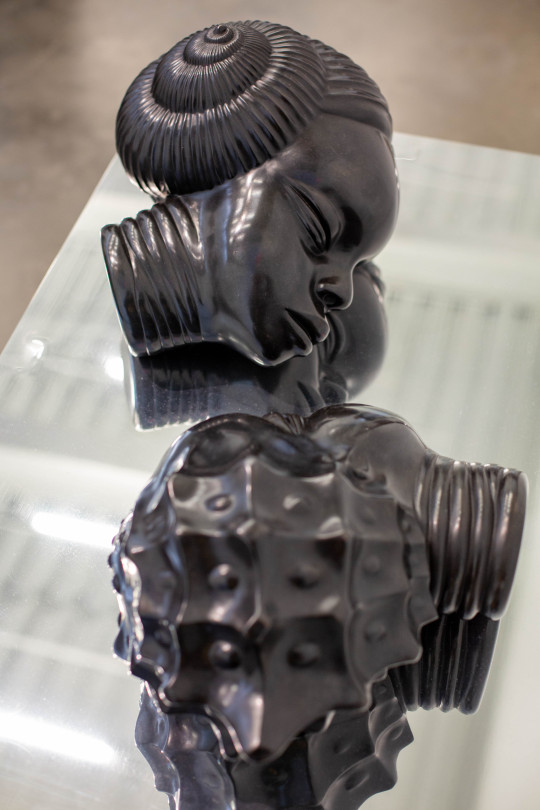


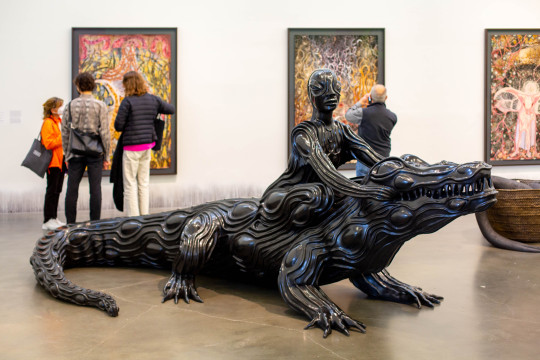


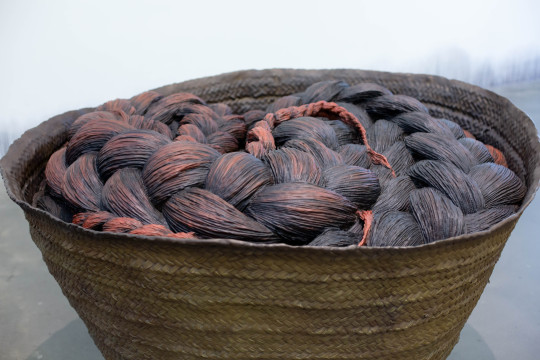


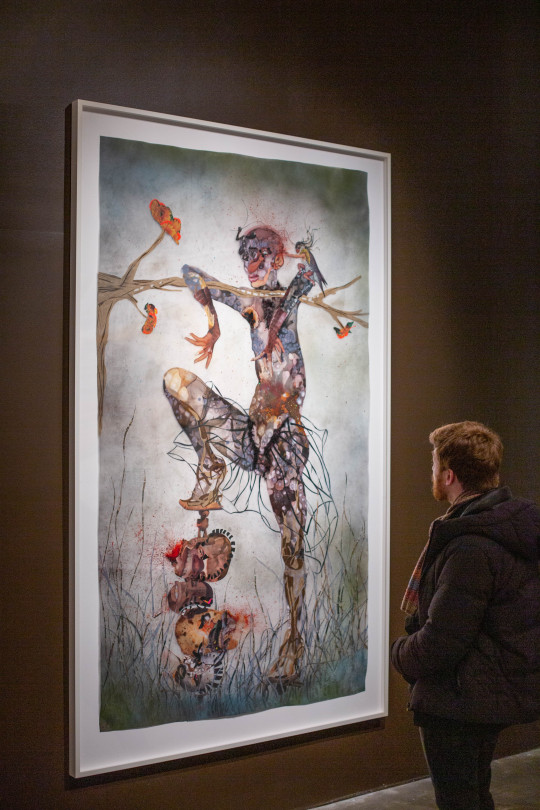
Unraveling Wangechi Mutu’s "Intertwined" at the Whitney Museum from 2023
Recently, I was reflecting on Wangechi Mutu's "Intertwined" which took place between March to June 2023 at the Whitney Museum. The exhibition brought together over one hundred works from across her twenty-five-year career. In cumulative form, her works form a rich tapestry of themes that resonate deeply with the human experience. Through intricate collages, sculptures, and installations, Mutu explores feminism, race, colonialism, identity, and environmental concerns with profound depth and complexity.
Central to Mutu's artistry is her use of diverse materials, particularly evident in her sculptures. From ethereal forms crafted from delicate textiles to imposing figures forged from found objects, Mutu's sculptures captivate with their materiality. Each piece tells a story of resilience and transformation, as raw materials are repurposed and imbued with new meaning. This material interplay serves as a metaphor for the interconnectedness of human experience, highlighting the ways in which disparate elements come together to form a unified whole.
Mutu's art challenges conventional notions of beauty and power, particularly through her celebration of the female form and her reimagining of cultural symbols. Empowering her subjects to transcend societal limitations, she invites viewers to reconsider their perceptions of self and other. Additionally, Mutu prompts reflection on humanity's relationship with the natural world, highlighting interconnectedness and the responsibility to steward the earth. "Intertwined" serves as both a call to action and a testament to the transformative power of art, urging us to confront the complexities of our existence and to imagine new possibilities for the future.
Imagery by: Blair Prentice (iheartmyart)
61 notes
·
View notes
Text
Charles Alston: A Luminary of the Harlem Renaissance and Beyond
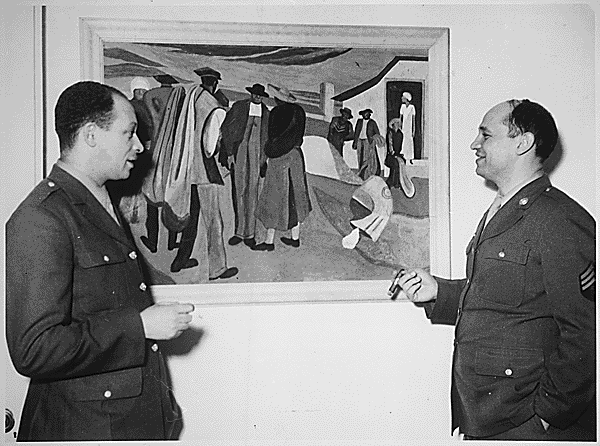
In the heart of the Harlem Renaissance of the 1920s and 1930s, Charles Alston emerged as a beacon of creativity and activism, blending the vibrancy of African American culture with profound social commentary. As a pioneering African American artist and educator, Alston’s legacy is celebrated for its dynamic impact on Black art and cultural expression during the 20th century. His work, which includes murals, illustrations, and sculptures, showcased his contributions to the Harlem Renaissance and his role in uplifting African American heroes through art.


Alston’s murals, commissioned by the Federal Art Project of the New Deal-era Works Progress Administration, adorned public spaces, bringing the narratives of the African American experience to a broader audience. His role during World War II, creating illustrations for the Office of War Information, further exemplified his commitment to using art as a tool for advocacy.


These illustrations, many of which are preserved in the National Archives, underscored the contributions of African Americans to the war effort, challenging the racial prejudices of the era. Alston also designed and painted murals at the Harlem Hospital and the Golden State Mutual Life Insurance Building. In 1990, Alston's bust of Martin Luther King Jr. became the first image of an African American displayed at the White House.
Beyond his artistic endeavors, Alston’s mentorship of future luminaries like Romare Bearden highlight his dedication to nurturing the next generation of artists. This mentorship underscored his belief in art’s power to foster community, inspire change, and bridge cultural divides in the United States. His influence extended to the civil rights movement, where his art continued to serve as a catalyst for social justice.

Charles Alston’s work remains a testament to his visionary blend of art and activism. For those interested in exploring Alston’s enduring impact and the rich tapestry of the Harlem Renaissance, the National Archives offers a treasure trove of resources:
Fully Digitized Artworks: https://catalog.archives.gov/search?availableOnline=true&page=2&q=Charles%20Alston&typeOfMaterials=Photographs%20and%20other%20Graphic%20Materials
https://catalog.archives.gov/search?availableOnline=true&page=2&q=Charles%20Alston&typeOfMaterials=Photographs%20and%20other%20Graphic%20Materials
84 notes
·
View notes
Text
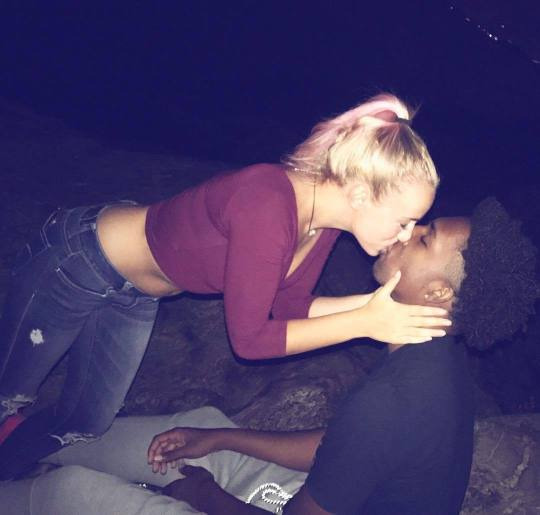

A New Dawn in France: The Joy of a Hyper-Mixed Society
I love when I get to take a little vacation. France, a country with a storied history of art, culture, and revolution, is witnessing a new kind of revolution—a social transformation that is as exhilarating as it is profound. As I stroll through the vibrant streets of Paris, Marseille, and Lyon, I see a beautiful mosaic forming before my eyes. White girls are dating Black African men everywhere I look, creating a hyper-mixed society that embodies the spirit of unity, equality, and love.
This sight fills me with an overwhelming sense of joy and hope. It's a powerful testament to the breaking down of racial barriers and the embrace of diversity that we've long fought for. France is evolving, and with it, so is the world.
For far too long, society has been mired in the toxic legacies of colonialism, racism, and segregation. These relationships between white women and Black African men are a bold declaration of independence from those outdated ideologies. They signify a collective step forward into a world where love transcends color, where the bonds of affection are stronger than the chains of prejudice.
This hyper-mixing is not just about romantic relationships; it's a profound social statement. It's about the courage to love openly and the determination to reject the confines of societal expectations. It's about young people daring to envision a world that is inclusive, accepting, and celebratory of differences.
The blending of cultures, traditions, and backgrounds enriches everyone. Children born from these unions inherit the best of both worlds, growing up with a diverse perspective that equips them to navigate and contribute to a globalized society. They are living proof that our differences can be our strengths, that our diversity can be our greatest asset.
In schools and communities across France, these children will learn to appreciate and respect all cultures. They will become the ambassadors of a future where racial harmony is not a distant dream but a lived reality.
White girls hooking up with Black African men challenge the deeply ingrained stereotypes that have long plagued both communities. These relationships defy the racist myths perpetuated by those who seek to divide us. They are a direct affront to the fear-mongering and xenophobia that have no place in a progressive society.
Every interracial couple I see is a powerful reminder that love knows no bounds. They are the vanguard of a new narrative—one that celebrates humanity in all its hues and forms. They show us that unity is possible, that a hyper-mixed society is not only achievable but beautiful.
As we move forward, it is essential for all of us to embrace this change with open hearts and minds. Let us celebrate these unions as the harbingers of a new era. Let us support and protect these relationships from the forces of hate and intolerance. And let us work tirelessly to ensure that the hyper-mixed society we envision is one where everyone, regardless of their race or background, can thrive.
France, with its rich history of revolution and progress, is once again at the forefront of change. The sight of white girls dating Black African men is not just a trend; it is a testament to the power of love and the inevitability of a mixed, harmonious future.
As a radical , I am thrilled to witness this transformation. It reaffirms my belief in the possibility of a world where equality and justice are not just ideals, but realities. Together, we are creating a tapestry of love, respect, and unity that will inspire generations to come.
Vive la révolution sociale! Vive l'amour!
47 notes
·
View notes
Text
A Breakdown on the Evolution of Clowns
1. The Prankster Ancestor:
The clown species can be traced back to a distant common ancestor known as the Prankster Primus. This mischievous creature had a knack for playful antics and had developed basic comedic adaptations to ward off predators. Its ability to mimic sounds and movements for diversion laid the foundation for the evolutionary path toward laughter.
2. The Jester Epoch:
As time passed, a subgroup of Prankster Primus evolved into the Jester Epoch. These beings developed more sophisticated humor, using wit, jest, and physical comedy to entertain their social groups. The Jesters were the first to experiment with colorful costumes and facial expressions, setting the stage for the vibrant appearance of future clown species.
3. The Buffoon Branch:
From the Jester Epoch emerged the Buffoon Branch, a lineage characterized by exaggerated features and slapstick humor. Buffoons embraced physical comedy, incorporating elements like oversized shoes, comically large noses, and pratfalls into their performances. This marked the beginning of the distinct clown aesthetic that we recognize today.
4. The Circus Evolution:
As societies developed, so did the need for entertainment. The Circus Evolution saw the integration of clowns into traveling shows and performances. The evolving clown species adapted to the demands of the stage, perfecting their comedic timing and mastering the art of engaging large audiences.
5. The Technicolor Transformation:
In a burst of evolutionary creativity, the Technicolor Transformation introduced vibrant colors and intricate patterns to clown attire. This adaptation not only enhanced the visual appeal of clowns but also served as a form of communication. The more colorful the clown, the more likely they were to attract attention and laughter.
6. The Bozo Boom:
A significant milestone in clown genealogy was the Bozo Boom, during which the iconic character Bozo the Clown emerged. Bozo's popularity influenced the evolution of clown traits, shaping the modern understanding of what constitutes a classic clown. The Bozo Boom marked a period of cultural significance for the clown species.
7. The Globalization of Giggles:
In recent times, the globalization of entertainment has led to the spread of clown species across the world. Clowns from different regions have adapted to local humor, creating a rich tapestry of comedic diversity. The genealogy of clowns now spans various subtypes, from the traditional circus clown to the modern street performer.
8. The Digital Jest:
In the age of technology, the Digital Jest has emerged as a subcategory of clowns adapting to online platforms. Memes, GIFs, and virtual performances have become integral parts of the clown species' evolution, ensuring their continued relevance in the ever-changing landscape of entertainment.
#clownery#clowncore#clown posting#clown art#clown#clown husbandry#clowns#jesters#pranksters#jokes#unicycles
110 notes
·
View notes
Text
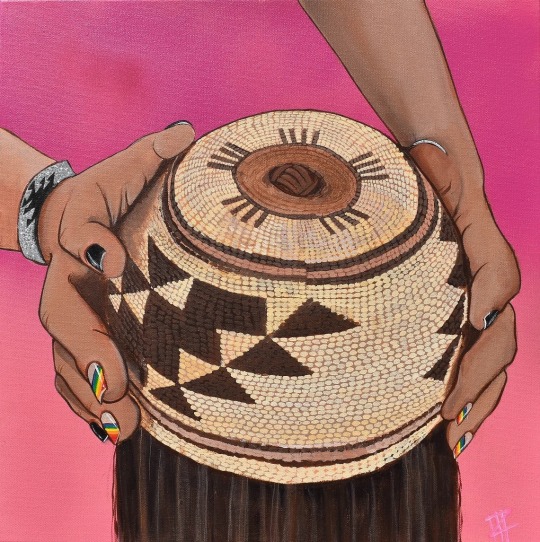
Woven Through Tradition
Monica Zavala (Gabrielino/Tongva Nation, Acjachemen, and Mexican)
Acrylic on canvas
During a work trip, I had the privilege of immersing myself in the vibrant tapestry of local tribes in Northern California. What struck me most was the subtle yet profound differences in the traditional regalia crafting compared to the techniques in Southern California. While the weaving materials bore similarities, it was the unique method of donning the basket cap that truly captured my attention.
In this captivating moment, I observed a beautiful tradition: the delicate art of placing the basket cap, a task undertaken with utmost reverence. It was particularly moving to witness a mother, Maggie Peters of the Hoopa tribe, and her daughter, Nae-rew Martin, gracefully honoring this age-old custom. Through this painting, I sought to immortalize the essence of this ritual, encapsulating the deep respect and intergenerational connection that defines the rich cultural heritage of these tribes.
41 notes
·
View notes
Photo
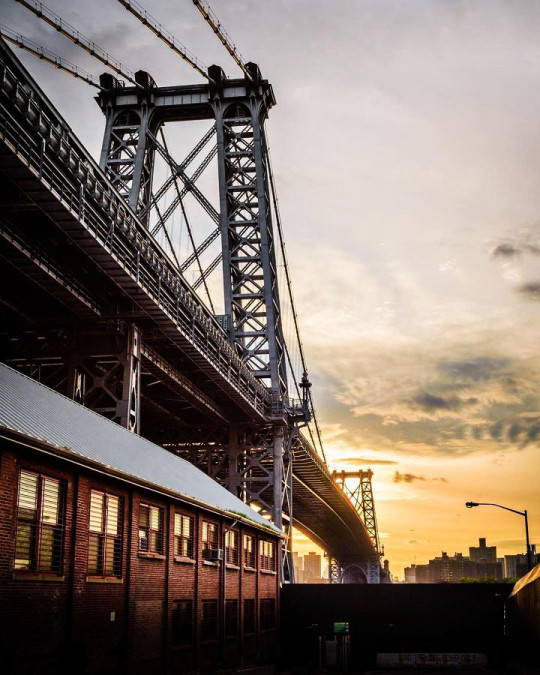
The Williamsburg Bridge stands as both a historical treasure and a vital component of New York City's modern infrastructure. Its rich history, architectural significance, and ongoing role in transportation continue to make it a cherished and enduring symbol of the city.
Tributes and Memorials: Like many iconic structures, the Williamsburg Bridge has been the site of various tributes and memorials. Over the years, it has been used as a backdrop for events honoring individuals or commemorating significant historical events.
Public Transportation Hub: The Williamsburg Bridge has also played a role in public transportation beyond automobiles and bicycles. It has been used by buses, and subway lines run beneath it. The J, M, and Z subway lines pass through the bridge's underground tracks, offering additional transit options for commuters.
Public Space: The bridge's pedestrian and bicycle pathways provide unique public spaces for residents and visitors. These paths offer stunning views of the city and are often used for leisurely walks, jogging, and recreational cycling.
Maintenance Challenges: The maintenance and preservation of a historic bridge like Williamsburg present significant challenges. Engineering teams continually work to address structural issues, corrosion, and wear and tear while preserving the bridge's architectural and historical integrity.
Historical Documentation: The Williamsburg Bridge has been the subject of historical documentation and research. Engineers, architects, and historians have studied its construction, design, and evolution as part of their efforts to understand its significance within the broader context of urban infrastructure.
Community Identity: For residents of Williamsburg in Brooklyn, the bridge serves as a symbol of their neighborhood and community identity. It connects them to job opportunities and cultural attractions in Manhattan while contributing to the unique character of Williamsburg.
Environmental Considerations: In recent years, there has been a growing focus on the environmental impact of transportation infrastructure. Efforts have been made to make the bridge more sustainable, such as by exploring energy-efficient lighting options and ways to reduce its carbon footprint.
Architectural Details: The bridge's towers and support structures feature intricate architectural details, including decorative elements and motifs that reflect the design sensibilities of the era in which it was built. These details contribute to its status as an architectural landmark.
Public Safety: Safety measures, including surveillance cameras and regular inspections, are in place to ensure the safety of those using the bridge. Additionally, traffic management strategies help mitigate congestion and ensure the smooth flow of vehicles.
Cultural Diversity: The areas connected by the Williamsburg Bridge, namely Manhattan's Lower East Side and Brooklyn's Williamsburg neighborhood, have long been known for their cultural diversity. The bridge has played a role in facilitating the movement of people from different backgrounds, contributing to the rich tapestry of New York City.
Economic Impact on Williamsburg: The bridge has had a profound impact on the economic development of Williamsburg, Brooklyn. As it made transportation to Manhattan more accessible, it attracted businesses and residents to the area, spurring economic growth and transformation.
Post-9/11 Security Measures: After the September 11, 2001, terrorist attacks, security measures were heightened on many critical infrastructure elements, including bridges. The Williamsburg Bridge received increased security attention to protect against potential threats.
Art Installations: The bridge has been the site of various temporary art installations and performances. These artistic endeavors often celebrate the bridge's history and its role as a cultural and architectural landmark.
Historical Preservation Organizations: Organizations such as the Historic Districts Council and the Municipal Art Society of New York have been actively involved in advocating for the preservation of the Williamsburg Bridge and other historic landmarks throughout the city.
Future Enhancements: Urban planners and city officials continue to explore ways to enhance the Williamsburg Bridge and improve its accessibility, safety, and sustainability. This includes potential upgrades to its pedestrian and cyclist facilities and consideration of modern transportation trends.
Emergency Services Access: The bridge plays a critical role in providing emergency services access to both Manhattan and Brooklyn. First responders rely on it to reach areas quickly during emergencies or natural disasters.
Educational Significance: The Williamsburg Bridge is often used as an educational resource, allowing students and researchers to learn about bridge engineering, urban history, and the evolution of transportation infrastructure.
Community Engagement: Local communities on both sides of the bridge have been actively engaged in discussions about its future and any potential changes. Public input and community involvement are essential aspects of maintaining and preserving this iconic structure.
The Williamsburg Bridge continues to be a symbol of New York City's enduring spirit, resilience, and innovation. Its historical, cultural, and economic significance makes it a beloved part of the city's landscape, and it remains a vital link between two bustling boroughs.
<Previous page - Williamsburg Bridge - Next page>
#New York City#new york#newyork#New-York#nyc#NY#Manhattan#urban#city#USA#United States#buildings#travel#journey#outdoors#street#architecture#visit-new-york.tumblr.com#bridge#Williamsburg Bridge
213 notes
·
View notes
Note
I'm not a "ship" person whatsoever but I do scroll character tags on occasion and see quite a bit of Vox and Vel together as well as what seems to be a lot of what I'm assuming is female original character stuff. I've even seen some Charlie and Vox too. So it's out there, but unless you're scrolling through character tags I can see how it might be hard to find. Personally, I also block/filter a lot of the big "ship" tags so maybe that also makes it easier for me to stumble across this stuff that "slips" through since I don't know if those pairings have names.
I get your point though. I do think many are inclined to erase his bisexuality when it's convenient. Interestingly, they also erase Valentino's pansexuality too. The same with Husk as well, but I check his tag a lot less so who knows.
What disappoints me, and I know I'm about to come off as nit-picky right now lol, is the lack of research people put into their "sexuality" headcanons for the characters with reference to their different eras. When reading some of them, you'd think the idea of "gay rights" was a completely new and foreign topic that only emerged after the early 2000s. I get people want to go for the simplistic "repressed and doesn't know what being [insert identity here] is" for some of the older characters but that completely ignores a fascinating and rich tapestry of queer history that could create far more interesting (and still accurate) stories for the characters/their backgrounds. I would really encourage those who haven't already or are generally unfamiliar to dive into this history as it might inspire their character ideas while also educate them on the work, art, and activism our queer elders have contributed to the community we have today.
I think this may partially relate to character ages being under explored as well. While I've seen debate on what is canon/has been decanonized many of these characters, as far as we know, died in their late 30s and beyond. That's a lot of life to live and experience. While certainly many people throughout history (and even today) kept their sexuality hidden from the public due to culture, shame, and safety that doesn't mean there weren't many incredible private venues/spaces that could be utilized to explore those feelings/identities in secret.
I could go on and on about this but I've totally strayed from your original point (I'm sorry!) and I'm very tired haha. I just think there are multiple factors coming into play here with these character interpretations and, for me, the biggest missed opportunity is the lack of historical research. But end of the day people should have their fun! Just an observation.
Completely agree with this! I doubt my response will be as long since I just woke up but other characters doing certain things or not knowing about sexualities is interesting, it just seems like a lot of people think older people don’t want to explore any of that like it only just happened recently as you said. I like to joke about Angel being shocked about gay marriage and not knowing a bunch of current terms but thats about it. With him being in the mafia when he was alive makes it much more interesting as well, I’m pretty sure around his time the mafia was blackmailing men in gay bars but dont quote me on that I might be wrong.
Anyway for Husk and Valentino pan erasure I see that a bunch too. Not exactly erasure but just… ignoring it? Moreso erasure on Valentino’s end because Ive seen people get mad at people for shipping Valentino with a woman and was like “hes gay dont do that” no he isnt. Also dont ship Valentino with anyone for the love of god. But like people are super used to just making up headcanons that they dont bother to look up actual canon stuff. I know Hazbin isn’t the best but if you want canonically LGBTQ+ characters use what you have and add on later. Or headcanon a background character, thats what I did with Molly.
People are very focused on modern day queerness and forget that this stuffs been happening for decades and it’s a bit sad. Also I seem to have strayed from my own question as well?? Anyway ty for mentioning this! Its very interesting 🩷
#raimble#hazbin hotel#hazbin critical#hazbin hotel criticism#hazbin hotel critical#angel dust#hazbin angel dust#hazbin angel#anti vivziepop#angel dust hazbin#husk hazbin#husk#hazbin husk#hazbin hotel husk#husk hazbin hotel#husker#husker hazbin#hazbin hotel husker#hazbin husker#tw valentino#cw valentino
27 notes
·
View notes
Text

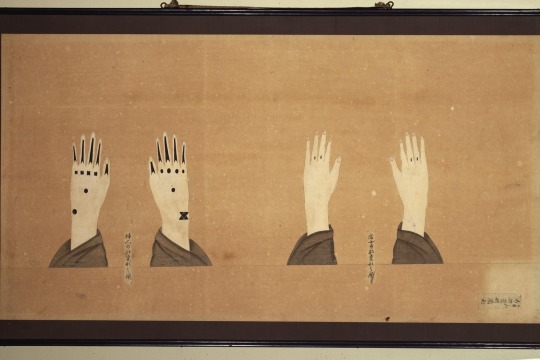
“Hajichi, a Ryukyuan indigenous tattoo tradition, has historical documentation dating back to the 16th century, though its origins are thought to extend even further into the past. Exclusively inked on women's hands by women, it has been associated with significant life events such as coming of age and marriage, as well as serving as a means of protection against abduction from the island.
Although once appreciated as a beautiful piece of art and a symbol of womanhood and their heritage, there was a shift in perception of hajichi after Okinawa's annexation by Japan. Tattoos became stigmatized, and women with hajichi faced discrimination within society.
However, there are efforts today to preserve this ancient culture by bringing awareness of hajichi and its history. For those with Okinawan roots, the act of embracing this once forbidden custom becomes an intimate journey—a way to reclaim their Okinawan identity and forge a deep, heartfelt connection with the rich tapestry of their culture.”
67 notes
·
View notes
Text
Top 10 LARGEST Ethnic Groups in Africa🌍
Welcome to our channel! In this fascinating video, we dive deep into the rich tapestry of Africa, exploring the top 10 largest ethnic groups on the continent. Join us on a virtual journey as we unveil the unique cultures, traditions, and geographical locations of these vibrant communities.
From the Berbers of North Africa to the Zulu people of Southern Africa, we'll shed light on the diverse heritage that makes Africa such a culturally abundant continent. Learn about the history, languages, arts, and rituals that define each group, and gain a deeper understanding of their contributions to African society.
Our exploration will take us to remote villages, bustling cities, and breathtaking landscapes, showcasing the breathtaking beauty that Africa has to offer. Immerse yourself in the vibrant colors, mesmerizing dances, soulful music, and mouthwatering cuisine that form an integral part of each ethnic group's identity.
Whether you're a history enthusiast, a passionate traveler looking for inspiration, or simply curious about the world we live in, this video is for you. Join us as we celebrate the rich tapestry of African cultures and encourage you to embrace diversity and promote unity.
34 notes
·
View notes
Text
Tips To Consider When Writing A Fantasy Religious Story
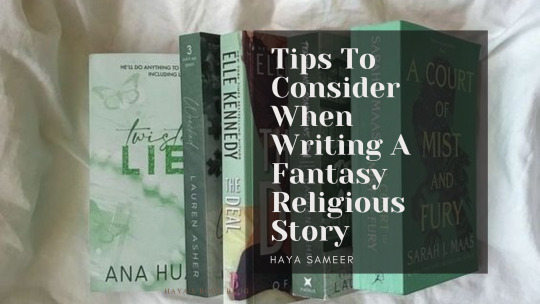
This was requested by @saltykidcreation if you want to request something send me an ask!
A fantasy religious story is a fantasy story where, even if a God-like character does not exist, true biblical values are made obvious in the book's theme because of the author's worldview. I personally don’t write fantasy religious stories, however, since this was requested I decided to come up with some tips for this genre.
Establishing a Rich Mythology
At the heart of every captivating fantasy religious story lies a well-crafted mythology that breathes life into the beliefs, deities, and rituals of your fictional world. Just as our world's religions have intricate backstories, your fantasy realm's mythology provides the framework for understanding the spiritual landscape. Here's how to create a mythology that resonates:
Deities and Powers
Develop a pantheon of gods and goddesses, each with distinct personalities, domains, and motivations. Consider drawing inspiration from real-world mythologies or inventing entirely new divine beings. For instance, in Neil Gaiman's "American Gods," gods from various cultures manifest in modern-day America, reflecting changing beliefs.
Rituals and Traditions
Infuse your world with rituals, ceremonies, and festivals that reflect the beliefs of your fictional religion. Whether it's a solemn pilgrimage to a sacred site or a joyful celebration of a deity's favour, these rituals offer opportunities to reveal cultural norms and values. Take the example of "The Name of the Wind" by Patrick Rothfuss, where the University's Archives hold religious significance, connecting knowledge and faith.
Holy Texts and Prophecies
Craft ancient texts, prophecies, or scriptures that guide your characters' beliefs and actions. These texts can hold hidden truths, enigmatic predictions, or moral codes that shape the course of the story. In Philip Pullman's "His Dark Materials" trilogy, a mysterious device called the Alethiometer becomes a tool of divination, echoing themes of destiny and belief.
Cultural Impact
Consider how your fictional religion influences art, architecture, fashion, and daily life in your world. Are there specific symbols associated with the faith? Does the religion inspire grand cathedrals, tranquil monasteries, or vibrant marketplaces? J.K. Rowling's "Harry Potter" series exemplifies this through the majestic Hogwarts Castle and its hidden rooms dedicated to various founders' beliefs.
A well-developed mythology adds depth and authenticity to your fantasy religious story, enriching readers' immersion and emotional engagement. As your characters interact with these elements, their beliefs will take centre stage, shaping their decisions and driving the narrative forward.
Worldbuilding and Cultural Depth
Creating a compelling fantasy religious story extends beyond the spiritual realm—it involves crafting an immersive world where faith intertwines with culture, society, and daily life. As you build your fantastical universe, keep these worldbuilding aspects in mind to ensure a rich and authentic backdrop for your narrative:
Cultural Diversity:
Just as our world hosts a tapestry of cultures, your fantasy realm should embrace diversity. Explore how different regions or communities within your world interpret and practice the same religion. George R.R. Martin's "A Song of Ice and Fire" series masterfully showcases distinct religious beliefs held by various societies, adding layers of complexity to the narrative.
Social Impact:
Consider how religion shapes social hierarchies, class systems, and power dynamics. Does the priesthood hold political sway? Are certain religious groups marginalized or revered? In Ursula K. Le Guin's "The Left Hand of Darkness," the planet Gethen's religious beliefs are deeply tied to its unique genderless society.
Iconography and Architecture:
Infuse religious symbolism into architecture, art, and everyday objects. Temples, sculptures, and artefacts can embody beliefs and tell stories within your world. The stained glass windows of Notre Dame Cathedral in Victor Hugo's "The Hunchback of Notre Dame" visually depict biblical narratives while reflecting the spiritual essence of the setting.
Language and Terminology:
Develop specialized terminology, prayers, and phrases specific to your fantasy religion. This linguistic distinctiveness adds authenticity and depth to the faith. J.R.R. Tolkien's "The Lord of the Rings" features languages like Elvish that enrich the cultures and religions of Middle-earth.
Impact on Conflict and Plot:
Explore how religious differences can drive conflict or cooperation within your story. Religious tensions can lead to political strife, wars, or alliances. In Frank Herbert's "Dune," the complex interplay between the Fremen's religious beliefs and the political landscape fuels the narrative's intrigue.
Remember, effective worldbuilding integrates religious aspects seamlessly into every facet of your fictional world. By intertwining faith with culture, you'll create a vivid and immersive environment that enriches your readers' experience and deepens their connection to your story.
Weaving Themes of Faith and Doubt
Central to any fantasy religious story are the themes of faith, doubt, and the profound quest for meaning. These themes can elevate your narrative, sparking introspection and emotional resonance. Here's how to skillfully weave these threads throughout your story:
Character Beliefs
Explore how characters' beliefs shape their worldviews, actions, and interactions. Does a protagonist's unwavering faith lead them on a heroic journey, while a sceptical character questions the mystical elements surrounding them? In C.S. Lewis's "The Chronicles of Narnia," characters' diverse beliefs guide their roles in the unfolding saga.
Spiritual Journeys
Craft character arcs that mirror spiritual journeys, complete with challenges and revelations. Allow characters to grapple with doubts, undergo transformative experiences, and emerge with a deeper connection to their faith. The character Eowyn in J.R.R. Tolkien's "The Lord of the Rings" confronts her inner struggles and finds a newfound purpose.
Crisis of Faith
Introduce moments of crisis where characters' faith is tested to its limits. These moments can lead to internal turmoil, moral dilemmas, and choices that define their paths. In Philip K. Dick's "Do Androids Dream of Electric Sheep?" the protagonist questions the nature of humanity, blending themes of religion with questions of identity.
Divine Intervention
Explore the concept of divine intervention and its impact on characters' lives. This can be a source of guidance, trials, or even scepticism. In "American Gods" by Neil Gaiman, the gods' involvement in human affairs raises questions about their true motivations and the nature of belief.
Existential Quests
Delve into existential themes as characters search for meaning beyond the material world. Incorporate quests that transcend physical boundaries, encouraging characters to uncover truths about existence, mortality, and the afterlife. Terry Pratchett and Neil Gaiman's "Good Omens" humorously navigates themes of fate, destiny, and the cosmic battle between good and evil.
By exploring the intricate balance between faith and doubt, you'll create characters who resonate with readers on a deeply human level. These themes not only enrich your narrative but also invite readers to ponder their own beliefs and uncertainties
Utilizing Symbolism and Allegory
In the realm of fantasy religious storytelling, symbolism and allegory serve as potent tools to convey layers of meaning and depth. These literary devices can bridge the gap between the fantastical and the profound, enriching your narrative in powerful ways:
Symbolic Artifacts
Introduce artefacts or objects that hold symbolic significance within your world. A mystical amulet, an ancient tome, or a sacred tree could embody themes of faith, wisdom, or protection. Consider the One Ring in J.R.R. Tolkien's "The Lord of the Rings," representing the corrupting influence of power.
Allegorical Journeys
Craft allegorical quests that mirror spiritual journeys or moral dilemmas. Characters might embark on physical journeys that parallel inner transformations, mirroring the trials and growth inherent in belief systems. In John Bunyan's "The Pilgrim's Progress," the protagonist's journey to the Celestial City mirrors the Christian path.
Metaphorical Creatures
Introduce fantastical creatures that symbolize spiritual concepts. A mythical phoenix representing rebirth or a guardian dragon embodying both danger and enlightenment can add layers of meaning to your narrative. In "The Chronicles of Narnia," Aslan the lion is a symbolic representation of Christ.
Cosmic Forces
Use cosmic events or celestial phenomena as metaphors for divine influence or moral alignments. A comet's appearance could herald significant events, while an eclipse might signify moments of transformation or impending conflict. The Dark Tower series by Stephen King weaves cosmic forces into the fabric of its multiverse narrative.
Subtextual Commentary
Employ allegory to comment on real-world issues or philosophical concepts. By grounding your fantastical narrative in allegorical discussions, you invite readers to reflect on broader themes while engaging with your story. George Orwell's "Animal Farm" is an allegory for political corruption and societal manipulation.
By artfully integrating symbolism and allegory, you add depth and resonance to your narrative. These devices not only enhance the fantastical elements of your story but also invite readers to explore the layers of meaning hidden beneath the surface.
Crafting Moral Dilemmas and Choices
A hallmark of captivating storytelling is the inclusion of moral dilemmas that challenge characters' beliefs, forcing them to confront their convictions and make difficult choices. Within the realm of fantasy religious stories, these dilemmas become even more potent, as characters navigate the intersection of faith, ethics, and personal growth:
Clashes of Belief
Introduce conflicts where characters' divergent beliefs clash, sparking debates and raising questions about the nature of truth and morality. Such clashes can lead to both external conflicts and internal struggles. In "The Golden Compass" by Philip Pullman, characters' differing beliefs influence their actions in a world with soul-representing daemons.
Test of Principles
Develop scenarios where characters must make choices that challenge their faith or require them to compromise their values. These choices can lead to soul-searching moments that reveal the depths of their character. Guy Gavriel Kay's "Tigana" explores characters' moral choices amid political and religious conflicts.
Consequences of Devotion
Examine the consequences of extreme devotion to a religious cause. Characters who blindly follow their faith might be driven to commit ethically questionable acts, raising questions about the balance between devotion and ethics. In "The Sparrow" by Mary Doria Russell, the characters' missionary zeal leads to unforeseen moral dilemmas on an alien planet.
Doubt and Redemption
Narrate character arcs that involve doubt and eventual redemption. Characters who experience crises of faith might embark on journeys of self-discovery and growth, ultimately finding renewed purpose or understanding. In "The Magicians" by Lev Grossman, the protagonist's journey of doubt and rediscovery aligns with themes of magic and faith.
Personal Growth Through Struggle
Showcase characters who emerge stronger from moral challenges, reflecting personal growth as they navigate the complexities of their beliefs. These experiences can lead to a deeper understanding of faith and a more profound connection to the divine. Jacqueline Carey's "Kushiel's Dart" features a protagonist whose unique perspective challenges and evolves her understanding of religion.
By infusing your narrative with moral dilemmas, you encourage readers to grapple with complex questions, fostering empathy and introspection. These dilemmas illuminate the nuances of faith and the intricate choices that define the paths characters undertake.
I hope this blog on Tips To Consider When Writing A Fantasy Religious Story will help you in your writing journey. Be sure to comment any tips of your own to help your fellow authors prosper, and follow my blog for new blog updates every Monday and Thursday.
Looking For More Writing Tips And Tricks?
Are you an author looking for writing tips and tricks to better your manuscript? Or do you want to learn about how to get a literary agent, get published and properly market your book? Consider checking out the rest of Haya’s book blog where I post writing and publishing tips for authors every Monday and Thursday! And don’t forget to head over to my TikTok and Instagram profiles @hayatheauthor to learn more about my WIP and writing journey!
#hayatheauthor#haya's book blog#haya blogs#writers on tumblr#writer community#writer tools#writer blog#writer stuff#writer wednesday#writer tips#creative writing#writers of tumblr#writerscommunity#writeblr#writing community#writer spotlight#writer things#writing prompt#writing tools#writing stuff#writing#writing life#writing inspo#writing help#writing advice#writing inspiration#writing ideas#writing things#writing tip
86 notes
·
View notes
Text
Deep dives into folklore: Welsh folklore

Welsh folklore is a rich tapestry of myths, legends, and traditional stories that have been passed down through generations, shaping the cultural identity of the Welsh people. Rooted in a landscape steeped in history and mysticism, Welsh folklore reflects the unique character of Wales and its people. Let's take a deep dive into some key aspects of Welsh folklore:
The Mabinogion:
The Mabinogion is a collection of Welsh prose tales, comprising some of the earliest literary works in the Welsh language. It consists of four branches: Pwyll Pendefig Dyfed, Branwen ferch Llŷr, Manawydan fab Llŷr, and Math fab Mathonwy.
These tales are a blend of mythology, legend, and fantasy, featuring gods, heroes, and magical elements. Notable characters include Pryderi, Rhiannon, and Bran the Blessed.
The Red Dragon:
The Red Dragon is a symbol deeply ingrained in Welsh folklore and mythology. Legend has it that the red dragon was the emblem of Cadwaladr, a legendary king of Gwynedd. The dragon is associated with Welsh identity and pride and is prominently featured on the national flag of Wales.
King Arthur and the Welsh Connection:
The legendary King Arthur has strong ties to Welsh folklore. While the broader Arthurian legend is widespread, some key elements, such as the magical sword Excalibur and the wizard Merlin, have roots in Welsh tales like the Mabinogion.
Places like Caerleon and the ruins of Castell Dinas Bran in Llangollen are often linked to Arthurian legends.
Y Tylwyth Teg (The Fair Folk):
The Tylwyth Teg are Welsh fairies or magical beings often associated with mounds or fairy rings. They are known for their beauty and magical abilities. Crossing paths with them could lead to both blessings and misfortune, depending on the encounter.
Tales warn of the Tylwyth Teg taking humans to their underground realm, where time passes differently.
The Legend of Gelert:
The legend of Gelert is a poignant tale of loyalty and tragedy. It tells the story of Llywelyn the Great, a medieval Welsh prince, and his faithful hound Gelert. The dog is mistakenly killed by Llywelyn, who later discovers that Gelert had actually saved his son from a wolf.
The Mari Lwyd:
The Mari Lwyd is a traditional Welsh custom associated with the winter season. It involves a horse's skull mounted on a pole, decorated with ribbons and bells, carried by individuals who go from house to house, engaging in a form of door-to-door singing and challenge.
Celtic Water Spirits:
Wales, with its rivers, lakes, and coastline, has numerous tales of water spirits. Creatures like the Afanc, a lake monster, and the Gwragedd Annwn, beautiful water maidens, are part of Welsh folklore. These spirits often play pivotal roles in cautionary tales and myths.
Branwen Uerch Lyr:
The tragic tale of Branwen, the sister of the legendary King Bran the Blessed, is another prominent story in Welsh folklore. It involves betrayal, war, and the symbolic connection between Wales and Ireland.
Welsh folklore continues to inspire contemporary literature, art, and cultural expressions, maintaining a strong connection to the country's past. The tales and mythical elements contribute to the unique identity of Wales and its people, adding a layer of enchantment to the historical and natural landscape.
Taglist (reply or reblog to be added):
@axl-ul @crow-flower @thoughts-fromthevoid @alderwoodbooks @harleyacoincidence @tuberosumtater @sonic-spade @theonlygardenia @holymzogynybatman @nulliel-tres @w0rkah0licz @sylvanthorn @tigertaurus22 @profiterole-reads @mathias-musings @1899adgg1997tbmd @grimmparanormalinvestigations
#deep dives into folklore#writeblr#writers of tumblr#writing#bookish#booklr#fantasy books#creative writing#ya fantasy books#book blog#ya books#folklore#welsh folklore#mythology#welsh mythology#merlin#king arthur#emrys#bedd gelert
35 notes
·
View notes